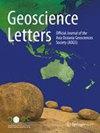Evaluation of residential building damage for the July 2021 flood in Westport, New Zealand
IF 4.3
3区 地球科学
Q1 GEOSCIENCES, MULTIDISCIPLINARY
引用次数: 0
Abstract
Reliable flood damage models are informed by detailed damage assessments. Damage models are critical in flood risk assessments, representing an elements vulnerability to damage. This study evaluated residential building damage for the July 2021 flood in Westport, New Zealand. We report on flood hazard, exposure and damage features observed for 247 residential buildings. Damage samples were applied to evaluate univariable and multivariable model performance using different variable sample sizes and regression-based supervised learning algorithms. Feature analysis for damage prediction showed high importance of water depth variables and low importance for commonly observed building variables such as structural frame and storeys. Overfitting occurred for most models evaluated when more than 150 samples were used. This resulted from limited damage heterogeneity observed, and variables of low importance affecting model learning. The Random Forest algorithm, which considered multiple important variables (water depth above floor level, area and floor height) improved predictive precision by 17% relative to other models when over 150 damage samples were considered. Our findings suggest the evaluated model performance could be improved by incorporating heterogeneous damage samples from similar flood contexts, in turn increasing capacity for reliable spatial transfer.新西兰西港 2021 年 7 月洪灾住宅建筑损毁评估
可靠的洪水损害模型要以详细的损害评估为依据。损失模型在洪水风险评估中至关重要,它代表了易受损害的要素。本研究评估了 2021 年 7 月新西兰西港洪水对住宅建筑造成的破坏。我们报告了在 247 栋住宅楼中观察到的洪水危害、暴露和损害特征。利用不同的变量样本大小和基于回归的监督学习算法,对损害样本进行了单变量和多变量模型性能评估。损失预测的特征分析表明,水深变量的重要性较高,而结构框架和层数等常见建筑变量的重要性较低。当使用超过 150 个样本时,大多数评估模型都会出现过度拟合。这是由于观察到的损坏异质性有限,以及低重要性变量影响了模型学习。随机森林算法考虑了多个重要变量(楼层以上的水深、面积和楼层高度),在考虑超过 150 个损坏样本时,预测精度比其他模型提高了 17%。我们的研究结果表明,通过纳入类似洪灾背景下的异质损害样本,可以提高评估模型的性能,进而提高可靠的空间转移能力。
本文章由计算机程序翻译,如有差异,请以英文原文为准。
求助全文
约1分钟内获得全文
求助全文
来源期刊

Geoscience Letters
Earth and Planetary Sciences-General Earth and Planetary Sciences
CiteScore
4.90
自引率
2.50%
发文量
42
审稿时长
25 weeks
期刊介绍:
Geoscience Letters is the official journal of the Asia Oceania Geosciences Society, and a fully open access journal published under the SpringerOpen brand. The journal publishes original, innovative and timely research letter articles and concise reviews on studies of the Earth and its environment, the planetary and space sciences. Contributions reflect the eight scientific sections of the AOGS: Atmospheric Sciences, Biogeosciences, Hydrological Sciences, Interdisciplinary Geosciences, Ocean Sciences, Planetary Sciences, Solar and Terrestrial Sciences, and Solid Earth Sciences. Geoscience Letters focuses on cutting-edge fundamental and applied research in the broad field of the geosciences, including the applications of geoscience research to societal problems. This journal is Open Access, providing rapid electronic publication of high-quality, peer-reviewed scientific contributions.
 求助内容:
求助内容: 应助结果提醒方式:
应助结果提醒方式:


